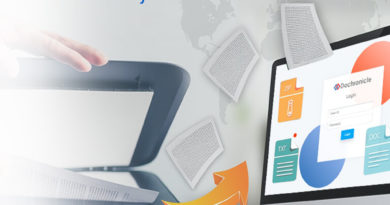7 Digital Marketing Stages for Businesses to Adopt
With the revolution in the field of digital marketing, it is important for businesses to consider the digital strategy. Businesses go through various stages of development, faced with various cycles throughout the life of the business.
What you are focusing on today may not be what matters tomorrow, and your problems will change and will require different approaches in order to be successful. Like if, you get an email marketing agency onboard today and it brings you good sales/results. It might not be suitable for another time.
You should be able to anticipate upcoming problems and sources of financing that you will need to succeed at every stage of the business life cycle. That would only be possible if your business goes through all these stages with a holistic digital perspective in mind:
1. Segment stage
The segment of the life cycle of your business is when your business is just a thought or an idea and its possible feasibility for all mediums.
- Challenge: Most companies involved in the launch stages will have to overcome the problem of market entry and use one niche. Do not spend too much money and time resources.
- Focus: At this stage of the business, the focus is on comparing business opportunities with your skills, experience and passions. Other focal points include deciding on the ownership structure of the business, finding professional consultants, and business planning.
- Money Sources: At the beginning of the business life of a business without a proven market or customers, the business will rely on money from owners, friends and family. Other potential sources include suppliers, customers, and government grants.
2. Launch Stage
Your company now exists in legal terms. Products or services are in production and you have your first customers.
- Objective: If your business is at the start-up lifecycle stage, you probably overestimated the money requirements and time to market. The main task is not to burn the fact that you have little money. You need to find out what profitable needs your customers have and check the reality to make sure that your business is on the right track.
- Focus: For beginners, creating a customer base and market presence along with tracking and maintaining cash flow are required.
- Money Sources: Owner, friends, family, suppliers, customers or grants.
3. Growth Stage
Revenues and customers are growing with many new opportunities and challenges. PR is strong, but competition is surfacing.
- Challenge: The biggest challenge companies face is a constant assortment of issues that offer more time and money. Effective management and a possible new business plan are required. Learn how to train and delegate to conquer this developmental stage.
- Focus: Enterprises in the growth life cycle are focused on managing their business in a more formal way to cope with the growth of sales and customers. Better accounting and management systems should be created. New employees should be hired to deal with the influx of business.
- Money Sources: Banks, profits, partnerships, grants and leasing options.
4. Installed Stage
Your business has now matured in a thriving company with a market place and loyal customers. Sales growth is not explosive, but manageable. Business life has become more ordinary.
- Task: At this stage of life, it is too easy to rest on our laurels; The market is relentless and competitive. Focus on the bigger picture. Problems such as economics, competitors, or changing customer tastes can quickly finish everything you have worked on.
- Focus: The established life cycle company will focus on improvement and productivity. To compete in an established market, you will need more effective business practices, as well as automation and outsourcing to increase productivity.
- Money Sources: Profit, banks, investors and government.
5. Extension stage
This stage of the life cycle is characterized by a new period of growth in new markets and distribution channels. This stage is often the choice of the owner of a small business to gain a greater market share and search for new channels of income and profit.
- Objective: Moving to new markets requires planning and research. You should focus on businesses that complement your existing experience and capabilities. Moving to unrelated areas can be disastrous.
- Focus: Add new products or services to existing markets or expand your existing business into new markets and types of customers.
- Money Sources: Joint ventures, banks, licensing, new investors and partners.
6. Stage of decline
Changes in the economy, society or market conditions can reduce sales and profits.
This can quickly put an end to many small companies.
- Objective: Enterprises at the stage of reducing the life cycle will be called into question the decline in sales, profits and negative cash flow. The biggest problem is how long a business can maintain negative cash flow. Think about whether this time can go to the final stage of the life cycle … exit.
- Focus: search for new opportunities and business projects. Cutting costs and finding ways to maintain cash flow are vital for lowering levels.
- Sources of money: suppliers, customers, owners.
7. Exit Stage
This is a great opportunity for your business to cash out all the efforts and years of hard work. Or it could mean shutting down a business.
- Objective: Selling a business requires your real appreciation. It may have been years of hard work to build a company, but think about the real value in the current market. If you decide to close your business, the task is to solve the financial and psychological aspects of losing a business.
- Focus: Get the right rating for your company. Look at your business operations, management and competitive barriers to make the company more attractive to the buyer. Establish legal sales agreements along with a business transition plan.
- Sources of money : Find a business valuation partner. Consult your accountant and financial advisors on the best taxation strategy for selling or closing a business.
Each stage of the business life cycle may not occur in chronological order. Some companies will be “created for the flip,” quickly moving from launch to exit. Others will prefer to avoid expansion and stay at the established stage.
Whether your business is a striking success or a gloomy failure depends on your ability to adapt to changing life cycles. What you focus on and overcome today will change in the future. Understanding where your business fits in the life cycle will help you anticipate upcoming problems and make better business decisions.




